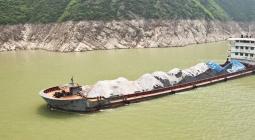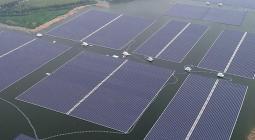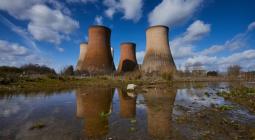Does Asia need more coal-fired power plants?

In the weeks following the celebration of humankind’s first successful landing of two men on the moon, who stayed there for over 21 hours and left their lunar module to walk on the moon’s surface, we have celebrated this unprecedented and transformative event, which has had an indelible impact on all of our lives. Technologically, the world has progressed in many dramatic ways in the past half century. Thus I find it unfortunate, in the midst of the celebrations of the remarkable moon-landing event, that it is still necessary to write columns such as the one I have written here, where I must argue against a strong push to continue developing coal-fired power plants in many regions around the world, including Asia.
A few weeks ago an op-ed in Forbes online titled “In Coal we Trust: The Need for Coal-Fired Power Plants in Asia”, caught my attention. The editorial was written by Tilak Doshi, an economist whose byline states that he has “…worked in the oil and gas sector as an economist in both private industry and in think tanks…”. I first became aware if Mr. Doshi’s op-ed through another op-ed written by Rod Walton in Power Engineering (Mr. Walton also organizes the PowerGen International conferences, which features a “Future of Coal-Fired Generation” track at its upcoming conference in New Orleans in November). Although I do not spend much of my time reading online articles about coal-fired power generation, the title and the message of the Forbes article, echoed by the Power Engineering article, requires a response from ISES. Both writers have well-established reputations with their readers and followers. However, in my view, in promoting a technology that should have been abandoned by the end of the 20th century, both have failed to recognize that viable alternatives for meeting the burgeoning energy demands in much of the Asian region, and are clearly missing, or worse, ignoring the urgency to address climate change.
By way of background, in a comprehensive report by the International Energy Agency, coal demand in 2017 and 2018 has increased for the first time this decade[1]. In 2018 alone this increase was 0.7%. Coal remains the largest source of electricity and second largest source of primary energy worldwide. However, coal represents only a fraction of the addition of over 300 MToe (Million Tonnes of Oil Equivalent) in primary energy supply in 2018. Much of the world’s growth in primary energy demand has been driven by the electricity sector, which grew by 4% in 2018 and now represents about 20% of final energy use around the world. Overall this growth in primary energy demand and supply is driven by a strong global economy, in particular in the Asian region, where the majority of the increases in coal-fired electricity generation are occurring.
In contrast, much of the rest of the world has been retiring coal-fired power plants at a rapid rate (in the U.S. alone, close to 300 coal-fired power plants have been retired since 2010). These retirements are being driven by at least two major factors: economics, such as competition from lower cost natural gas and especially renewables, and environmental, such as air and water quality control requirements and, most important, recognition for the urgent need to mitigate global climate change.
Although Mr. Doshi’s op-ed correctly notes that coal-fired power plants have made significant progress in reducing local air and water quality impacts, he misses, and even denies, a fundamental point that sends a misleading and even a damaging message to the countries seeking solutions to their burgeoning power requirements. Mr. Doshi argues that the demise of coal around the world can be blamed on a “climate-industrial complex”, a fundamentally flawed climate-denying concept embraced by the coal industry and supported by a handful of technical studies that fail to refute the preponderance of evidence put forth by the Intergovernmental Panel on Climate Change (IPCC) and a long list of related publicly- and privately-funded studies and hundreds of books and other literature. He further offers up the “myth of renewable energy”, citing studies supported by the coal industry that fossil-free power generation and 100% renewable energy will harm the economy. “Myths” are defined as concepts that people may believe, but in fact are not true. ISES opted to stop using this word since it can come off as disparaging to those who have the facts that refute the untruthfulness of a concept. Mr. Doshi’s arguments are easily challenged, since many of the “myths” he cites charge that there are hidden costs to renewable energy as a viable alternative to coal; yet these charges can easily be refuted by solid facts. At the same time, he ignores the significant hidden costs of climate change associated with human-caused carbon emissions.
Certainly in my view arguments to encourage Asian countries to achieve their energy goals through additional coal-fired power plants is at best misguided, and, worse, will ultimately create far more harm and damage, not only to their own economies and environment, but certainly to the world overall, for which they will face the consequences. The IPCC along with numerous government agencies and NGO’s (including ISES), along with documentation provided in many popular books, clearly demonstrate, with scientific surety, the imminent threats to global humanity and the world’s ecosystems posed by climate change associated with failure to reduce and quickly eliminate carbon emissions to the atmosphere.
A popular pair of photos comes to mind when I think about how quickly a technology revolution can take hold: a revolution that we saw with the moon landings and are currently seeing in the electricity generation and transmission sector. The photos I refer to are of 5th Avenue in New York City in 1900, and again in 1913. These two photos give stark evidence that in just 13 years the primary mode of transportation transformed almost completely from the horse-drawn carriage to the gasoline-powered automobile. A significant transportation revolution had occurred in little more than a decade. A similar transformation can be seen a century later in renewable energy; from 2000-2013 the global wind and solar industries transformed from relatively “boutique” status to full -fledge multi-billion dollar industries, where the 17 GW of wind and 1.3 GW of solar in 2000 grew to 319 GW wind and 138 GW solar by 2013 (and of course this remarkable growth continues, with 592 GW of wind and 509 GW of solar installed by the end of 2018).
Not only are the efforts from outside sources to push new coal-fired generation on Asian economies preventing them from enjoying the energy transformation being experienced in much of the rest of the world, these plants are for sure locking in huge additional carbon emissions that will accelerate the dire impacts of climate change that the world as a whole will experience during the decades to come. In many cases these countries are also being committed to rely on coal imports from other countries, further harming their own economies and adding to the global carbon footprint.
With regular columns such as this and our periodic series of factual infographics, ISES is working to develop communication tools to refute the biased reporting coming out of the coal industry to maintain a 20th century technology that should be playing no role in the energy transformation of the 21st century. Our messaging is intended to convince countries such as those experiencing rapid electricity growth in Asia to get on board with the energy transformation towards clean, renewable energy that is currently occurring throughout much of the word.
[1] Coal use increased by 4.5% during the period 2000-2010, but then went into sharp decline until 2017.
*Dr. David Renné, ISES President
30 July 2019





